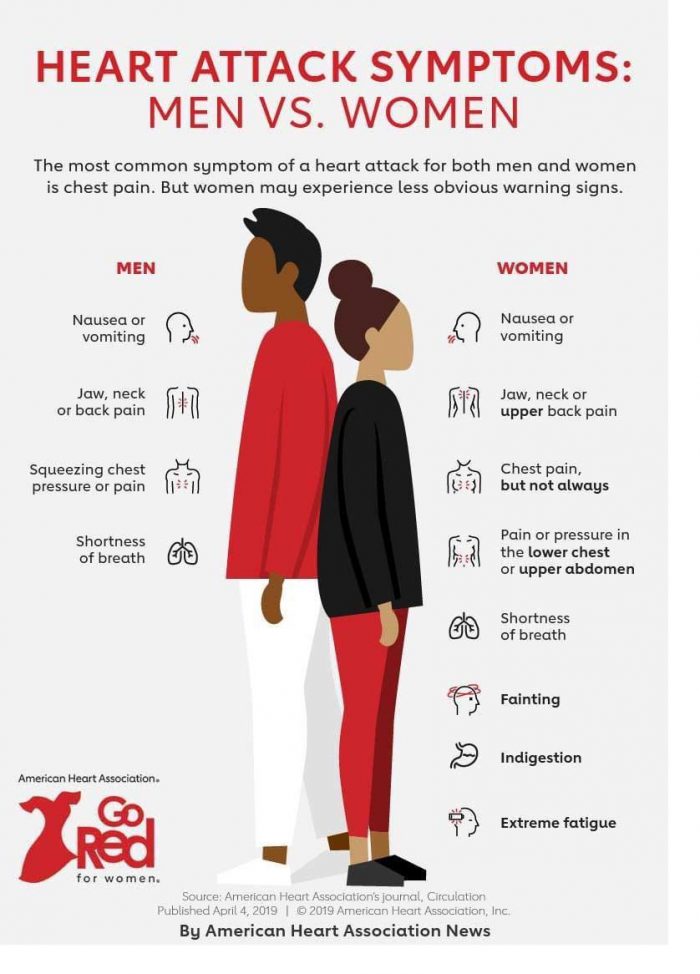
For decades, popular perception has held that heart attacks affect men more than women. But as it turns out, this is actually not the case. In fact, women are just as likely to experience a heart attack as men—they’re just experiencing it differently. In most cases, a woman’s symptoms are less obvious than a man’s and could be mistaken for some other condition. This means they may go undiagnosed or misdiagnosed until the damage is done. To help you understand the differences between men and women’s heart attack symptoms, we’ve broken down what each one looks like below.
Women may experience more subtle symptoms
Men and women can experience the same symptoms, but there are some differences. Women may experience more subtle or atypical symptoms than men, because they are less likely to recognize that what they’re feeling could be a heart attack. Some women describe the pain of heart attack as being in their neck or jaw instead of their chest.
While these differences exist between men and women’s heart attack symptoms, it’s important to note that neither sex has a monopoly on any one symptom. In other words, it’s possible for a man or woman to have all of the classic signs and symptoms—and it’s also possible for people who look perfectly healthy and don’t fit any kind of stereotype at all (young or old) to have just as many chances at having a heart attack.
The best way to protect yourself against heart attacks? Be aware of your risk factors and pay attention to what your body is telling you. If you’re experiencing symptoms, don’t ignore them! Speaking up to a doctor can be hard, but it’s worth it if it could potentially save your life.
